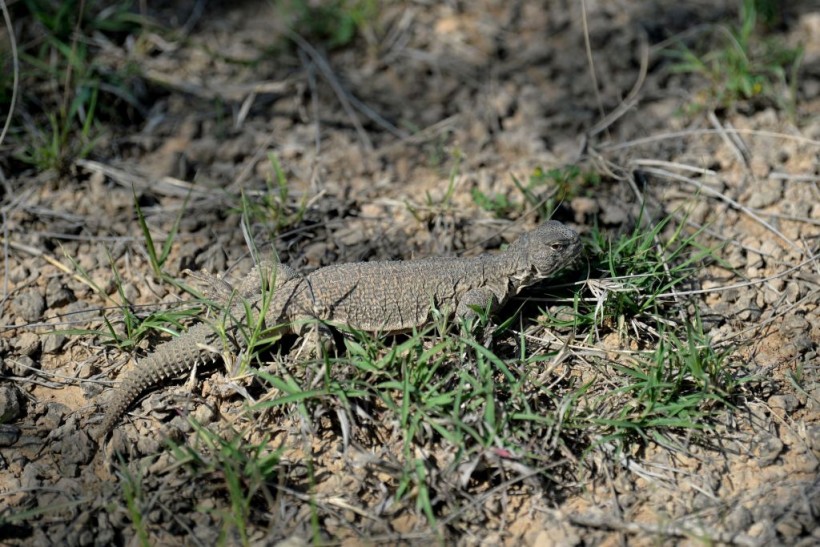Climate change is one of the biggest threats to biodiversity on Earth, as it alters the environmental conditions that living organisms depend on.
A new study by researchers from the University of Arizona (UArizona) shows that the pace of climate-driven extinction is accelerating, especially for species that live in mountainous regions.
Lizards disappearing from Arizona's Sky Islands
 (Photo : FAROOQ NAEEM/AFP via Getty Images)
(Photo : FAROOQ NAEEM/AFP via Getty Images)

The study, published in the journal Ecology Letters, focused on the Yarrow's spiny lizard, a species native to the southwestern U.S. and western Mexico.
The lizard can be found in oak and pine forests in 18 of Arizona's Sky Islands, isolated mountain ranges surrounded by desert or grassland.
The researchers surveyed the lizard populations in these mountain ranges in 2014 and 2015, and then again in 2021 and 2022.
They found that about half of the lizard populations at lower elevations had disappeared in the seven-year interval.
This is because temperatures are warmer at lower elevations, and the lizards at lower elevations were presumably not able to tolerate the increasing heat.
This loss of low-elevation populations is a signature pattern of climate change, according to the researchers.
"The rate of extinction in such a short time period was shocking," said John J. Wiens, a professor in the Department of Ecology and Evolutionary Biology at UArizona, and the senior author of the study.
The researchers compared their findings to historical records from the same mountain ranges and found that the average extinction rate of the lizard populations at low elevations had tripled over the past seven years, relative to the preceding 42 years.
This means that climate change is causing extinctions at an increasing rate, as predicted by previous studies.
Also Read: Extinct Animals: Which Died from Natural and Anthropogenic Causes?
A 3-million-year-old lineage at risk of extinction
The study also revealed that a distinct lineage of the Yarrow's spiny lizard from the Mule Mountains, near Bisbee, may be completely extinct by 2025.
This lineage has been separated from other populations for about 3 million years, and represents a unique evolutionary history.
"The low-elevation populations in the Mules were fine in 2014. Now the only ones that we have found left were within about 300 feet of the top of the mountain in 2022, and they appear to have been losing about 170 feet per year," Wiens said.
The researchers estimated that if the current rate of decline continues, this lineage will be gone within three years.
This would be a major loss of biodiversity, as this lineage may have adaptations and genetic variations that are not found in other populations.
Some hope for adaptation and survival
However, not all low-elevation populations went extinct between the surveys, Wiens said. For example, two populations that occurred at very low elevations survived.
Before they disappeared, the research group had collected genomic data from most of those populations in 2014 and 2015.
The researchers plan to analyze this data to see if there are any genetic differences between the surviving and extinct populations that may explain their different fates.
They hope to find evidence of adaptation to warmer temperatures, which could indicate that some lizards may be able to cope with climate change.
Related article: Scientists Unraveled Relationship Between Mass Extinctions and Global Warming
© 2024 NatureWorldNews.com All rights reserved. Do not reproduce without permission.
![Tsunami Hazard Zones: New US Map Shows Places at Risk of Flooding and Tsunamis Amid Rising Sea Levels [NOAA]](https://1471793142.rsc.cdn77.org/data/thumbs/full/70325/280/157/50/40/tsunami-hazard-zones-new-us-map-shows-places-at-risk-of-flooding-and-tsunamis-amid-rising-sea-levels-noaa.jpg)




